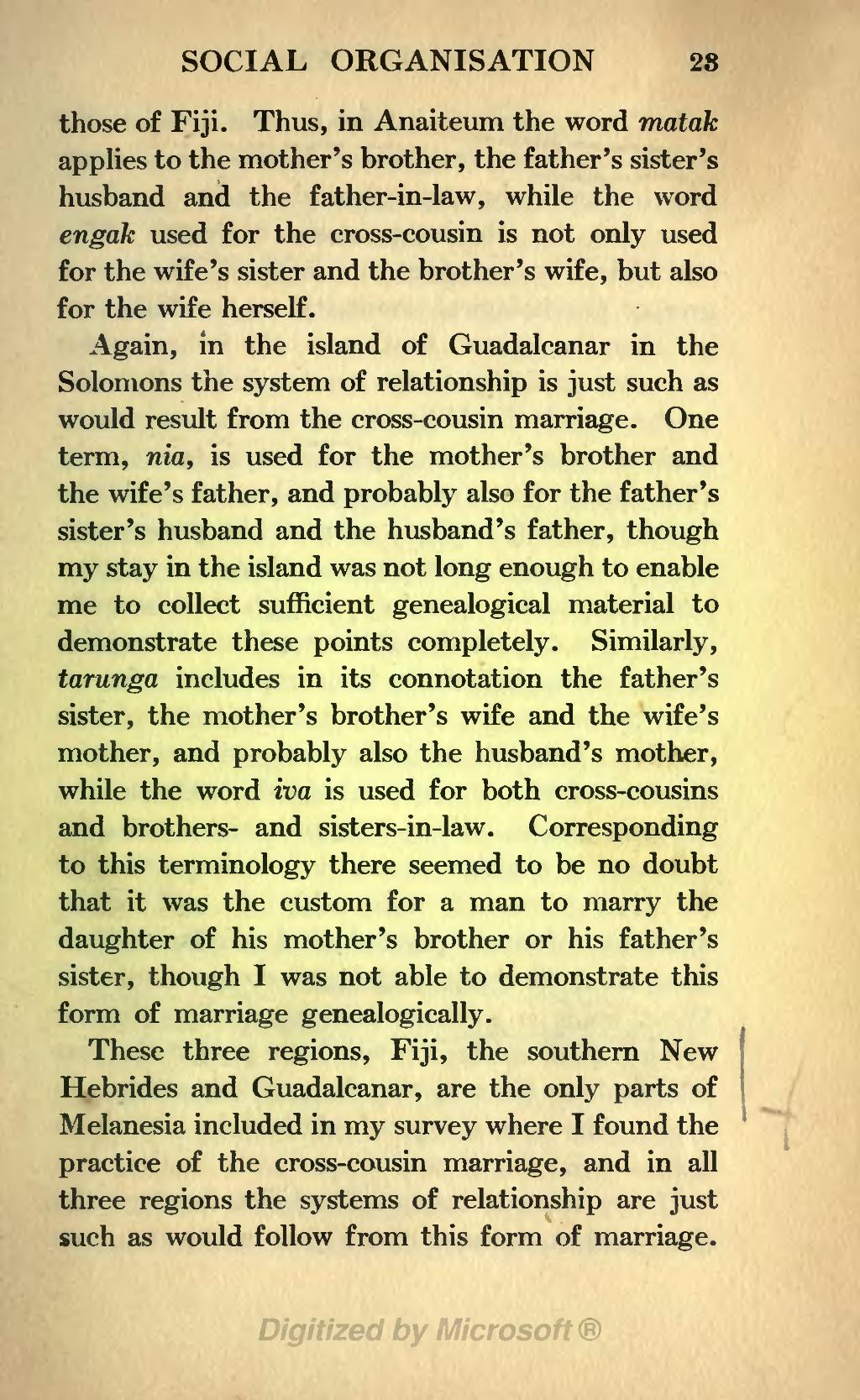those of Fiji. Thus, in Anaiteum the word matak applies to the mother's brother, the father's sister's husband and the father-in-law, while the word engak used for the cross-cousin is not only used for the wife's sister and the brother's wife, but also for the wife herself.
Again, in the island of Guadalcanar in the Solomons the system of relationship is just such as would result from the cross-cousin marriage. One term, nia, is used for the mother's brother and the wife's father, and probably also for the father's sister's husband and the husband's father, though my stay in the island was not long enough to enable me to collect sufficient genealogical material to demonstrate these points completely. Similarly, tarunga includes in its connotation the father's sister, the mother's brother's wife and the wife's mother, and probably also the husband's mother, while the word iva is used for both cross-cousins and brothers- and sisters-in-law. Corresponding to this terminology there seemed to be no doubt that it was the custom for a man to marry the daughter of his mother's brother or his father's sister, though I was not able to demonstrate this form of marriage genealogically.
These three regions, Fiji, the southern New Hebrides and Guadalcanar, are the only parts of Melanesia included in my survey where I found the practice of the cross-cousin marriage, and in all three regions the systems of relationship are just such as would follow from this form of marriage.

